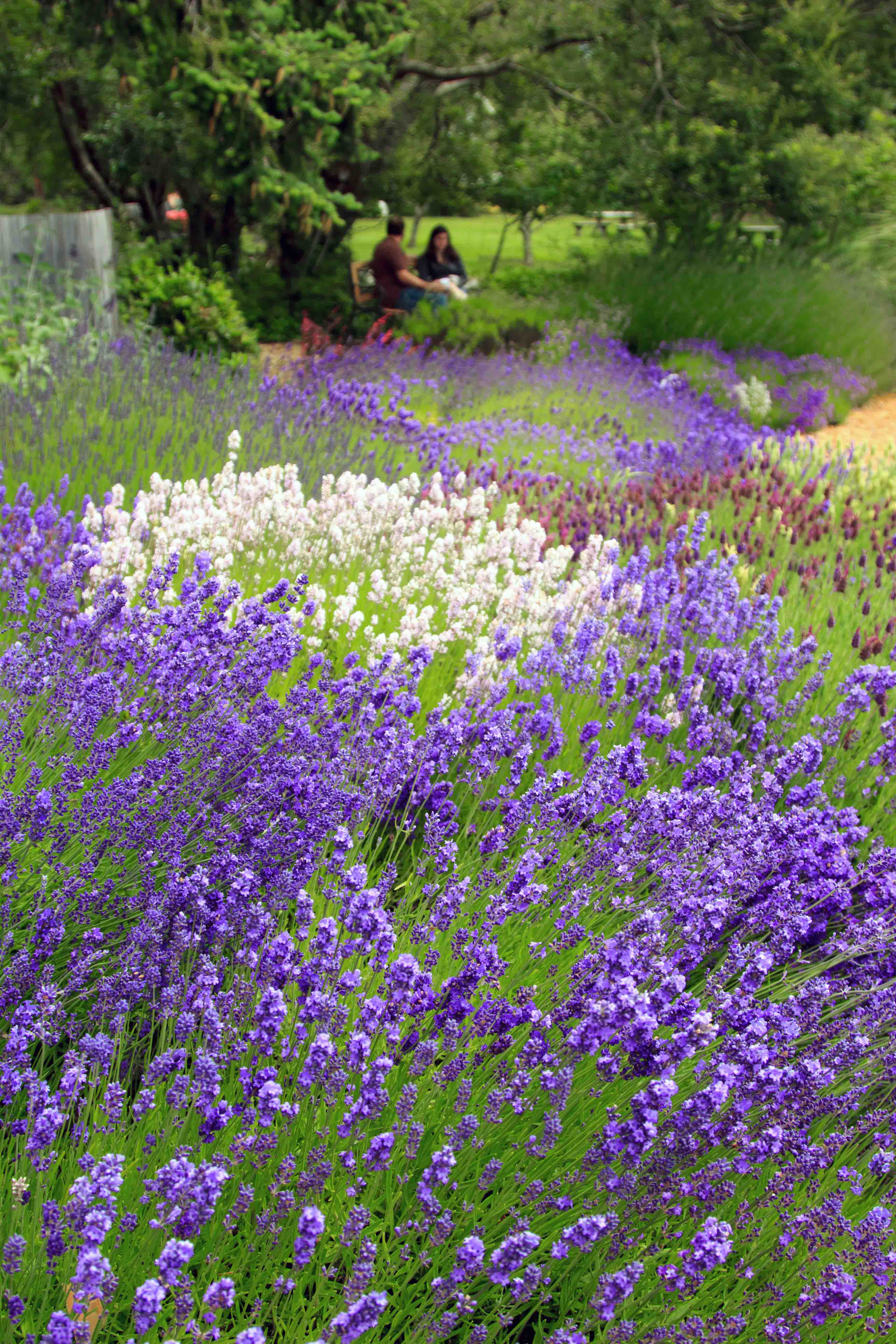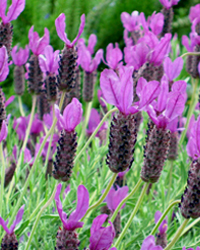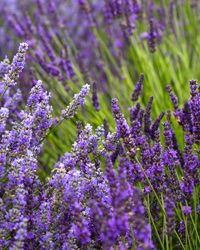Lavender Varieties
“The Genus Lavandula” – a scholarly 2004 monograph we use as our “bible” on lavender horticulture – there are, in round numbers, approximately 40 different species with approximately 400 varieties or cultivars of lavender. We say “at least” because even the authors of that highly detailed academic work note how many other species, subspecies and cultivars might be found in the wild that have not been clearly classified. For all that however, most gardeners are familiar with the terms “English”, “French”, “Spanish” and even “Italian” lavenders, a classification that covers the basic needs of many lovers of lavender. While broad associations are easy to make — angustifolia for “English”, intermedia for “French”, stoechas for “Spanish” or sometimes “Italian”, etc. — we strongly encourage the use of the true botanical names when seeking, or communicating about, specific varieties. In our Demonstration Garden at the Farm, we grow approximately 50 cultivars, adding a few every year either as replacement for those that did not make it through a particularly challenging winter, or as new varieties become available to us. 
  
Broadly speaking, the first to bloom at least in our climate, the “Spanish” or stoechas lavenders with their prominent “rabbit ears” at the top of the flowerhead are prolific if a little wild growers. One of the few lavenders that respond as do many flowers by reblooming if they are frequently “deadheaded”, their showiness makes them an excellent landscape lavender. Being less compact than the other species we grow, they do need to be controlled by judicious pruning. Given their propensity to readily reseed themselves, however, they provide excellent open area coverage providing the winter climatic conditions are not too harsh. Starting in April in our Pacific Northwest microclimate, they bloom through October, but many who visit us from warmer climates report specimens that bloom year-round with proper care. Angustifolias or “English” lavenders — somewhat of a misnomer given England’s significant distance in many dimensions from the lavender’s native Mediterranean roots — are the next to bloom in our climate, with flowering generally starting in May or June. These more orderly plants make for excellent architectural detail in a garden, their hemispherical plant shape being highly attractive both in full summer floral bloom as well as in pruned green winter dormancy. They are extremely hardy, with a relatively full spectrum of color from light blue through pink to deep purple. Very fragrant, they stimulate the senses both visually and aromatically. The intermedias or “French” lavenders have become perhaps the most ubiquitous of lavenders, in large part because of their generous size, winter hardiness and broad utility for both esthetic and functional applications. Blooming in our climate on San Juan Island begins in July and goes on through early September, with late July and most of August being the ideal time to enjoy them en masse in our large field acreage. Brilliant in color, pungent in aroma and continuously buzzing with bees, the fields provide a sensual experience difficult to forget. We grow two intermedia varieties as our dominant crops – ‘Provence’ primarily for its buds and ‘Grosso’ for dry flower bundles and especially essential oil. It is probably not by accident that ‘Grosso’ is said to be the most widely grown lavender in France. With the judicious use of just these three species – using cultivars that represent personal favorites in terms of color and flowerhead size – landscaping with lavender, given the visual and aromatic appeal of its extensive range of structure, color and fragrance, along with its very long blooming cycles, resistance to disease, long life and minimal demands for care, lavender has few competitors for the appellation of “perfect landscape plant”. That it also has so many additional uses makes it even more what some have called “The Gift of the Gods”. Need some lavender variety (or cultivar) suggestions? Here are our favorites.Download Lavender Growing Tips
© 2018, Pelindaba Group, LLC
|